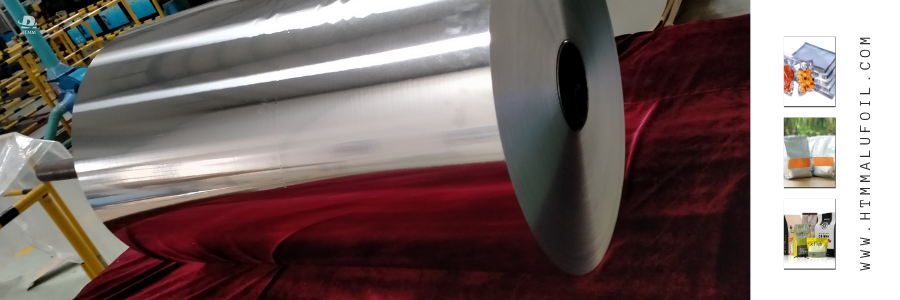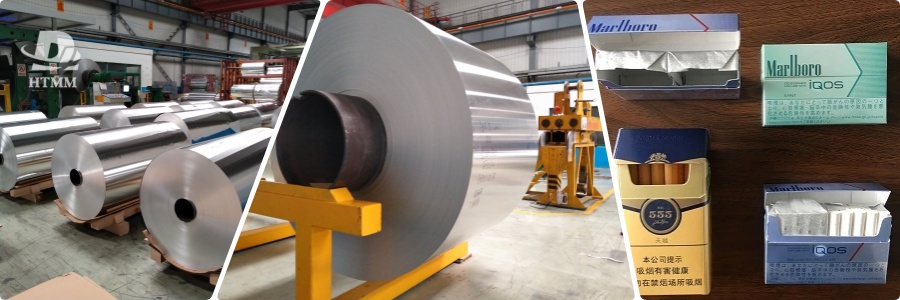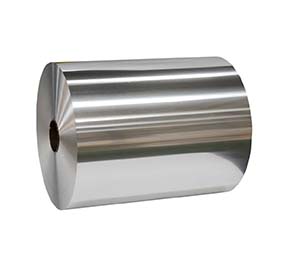These are not commodities; they are engineered solutions, each has a unique chemical make-up and mechanical properties specifically engineered for servicing specific (and sometimes difficult) packaging challenges. The 8079 aluminum foil has a slightly higher content of iron and silicon, is the dependable option of performance and durability, prized for its puncture resistance and strength, which makes it suitable for sharp or weird-shaped products, strong stand-up pouches, and mechanical stress resistant pharmaceutical blister packs. On the opposite of the spectrum, the 1235 aluminum foil is the most pure alloy, with around or over 99.35% aluminum content.

Examining the 8079 aluminum foil in greater detail it is abundantly clear that the alloy's superiority in more challenging environments is unmistakable. The alloy's improved mechanical properties are a result of its specialized metallurgical design, which affords it an unusual combination of high tensile strength and excellent elongation. In practical terms, this means that while the foil is strong and resistant to tearing it is incredibly ductile and easy to form, even in high speed converting processes such as deep drawing into blister packs or enveloping into uniquely shaped pouches. This combination of strength, ductility and toughness is crucial for avoiding leakers and maintaining package integrity under challenging distribution and storage demands.
In just getting to its destination, packages undergo compression, vibration and possible impacts. The thinner side—Aluminum foil thickness 6-15 microns—is where 8079 truly sets itself apart from other alloy offerings. The 8079 will provide an adequate barrier to moisture and oxygen at lower thicknesses—down to as thin as 6-9 microns—and is resistant to pinholes that can develop in other less forgiving alloys. What this means practically for converters is that they can expect fewer web breaks on laminating and printing lines, less downtime and ultimately better yields. For brand owners they can be confident their products are protected while they are assembled into bags, pouches, stands up or jars—without the risk of product degradation before they make it to the shelf or consumer. Whether it's sharp-edged snack food, freeze-dried camping meals, or life-saving medications, 8079 is superior.
On the other hand, 1235 aluminum foil is the specialist-the purveyor of purity when absolute barrier performance is a must. Its superior performance is the result of ultra-high purity, which reduces metallic impurities that can be the sites of pinholes during the processing aggressive rolling to achieve thin gauge foils. This produces a foil product with a remarkably low incidence of pinholes, allowing for a near-perfect hermetic seal, which is crucial for protecting products that are readily impaired. This complete barrier makes 1235 the choice for maintaining the volatile aromas of gourmet coffee and tea, foils that prevent the delicate flavors of dairy powders and confections from oxidation, and foil that maintains the sterility and efficacy of sensitive pharmaceuticals and medical devices.
Within the critical aluminum foil thickness of 6-15 microns, the 1235 foil offers performance like no other; even at the minimal thickness of 6 microns, due to its fine-grain structure, it provides a more consistent and reliable barrier than many developed alloys do at a greater thickness of foil. This allows packaging engineers to create lighter, more material-efficient packages without sacrificing protection thus meeting sustainability goals while also reducing material costs.
Choosing the right thickness of aluminum foil in the 6-15 micron thickness category is a refined balance of performance, functionality, and cost issues. The thickness category represents the industry standard, as it strikes a great balance of performance and functionality. From an end user's view, a 6 or 7 micron foil will have the greatest flexibility (and value) for applications with little stress, such as inner bags of snacks or candy bars. An 8 or 9 micron foil offers a stronger more robust foil that is versatile for applications from butter wraps and yogurt lidstock to portion size condiment pouches.

At the high end of the thickness range (10 to 15 microns), these would be considered heavy duty applications where durability is a key factor, such as retort pouches that are sealed under pressure for high sterilization temperature, large bags for pet food or bird seed, or even technical laminates for chemicals. Whether you decide to use 8079 aluminum foil for its strength or 1235 aluminum foil for its purity (or other alloys), mastering this thickness range is essential. Note that we have advanced rolling mills that offer tolerances of ±3%. Therefore, the chosen thickness is consistent on every meter of every roll (jumbo).
Our role as a manufacturer goes beyond just making products; we are a technical partner and innovator to advance the science of flexible packaging aluminum foil to meet the changing challenges of the market. We invest heavily in research and development of the performance of our 8079 aluminum foil and 1235 aluminum foil. This includes developing advanced lubricant systems that will improve foil performance on high-speed converting lines without compromising materials compliance for food contact, and developing specialized surface treatments that improve bond strength with a wider range of polymers and adhesives, facilitating newer more innovative and more sustainable laminate structures. We are also committed to sustainability, an important issue for the packaging industry.
Aluminum foil is recyclable, infinitely recyclable without loss of quality, and we encourage it's contribution to the circular economy. Our processes are designed to minimize energy and water use and we are near to placing thinner gauges into the market, in the 6-15 micron range, while maintaining performance levels via advanced alloying and processes, thus reducing an overall material footprint. For customers, working with us means access to deep experience as well as the highest quality foil besides.
To summarize, the selection of 8079 aluminum foil versus 1235 aluminum foil, is an important element defining the success any flexible packaging operation. It is essentially a choice between the durable strength of 8079 most suitable for difficult physical environments, and the impeccable pure barrier of 1235 essential for the security of the most delicate contents. This decision has ramifications for production efficiency, product protection, brand protection, and sustainability.
As a trusted manufacturer, we offer more than foil; we offer the experience, consistency, and innovative culture to help navigate this often complicated decision-making environment. We strive to empower our customers to confidently select the exact material that will lead to maximum production efficiency in their production line, absolute product protection, and consumer delight with flawlessly functioning packaging. In the competitive flexible packaging environment, your foil quality is your quality promise to your consumer. Therefore, choosing the right alloy and gauge thickness from a committed partner is not simply a purchasing decision, it is your most critical commitment to the future of your product and your brand.





